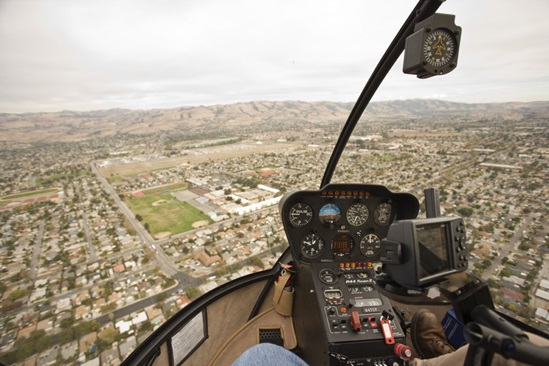Honeywell ups predictive maintenance game
New Recon system leverages satellite communications
Honeywell announced its new Health and Usage Monitoring Systems technology, Recon, Feb. 26 at Heli-Expo 2018 in Las Vegas. Recon’s sensors facilitate predictive, condition-based maintenance, and the system uses satellite communications to share helicopter health data in real time with maintenance crews on the ground, allowing them to track the health of a rotorcraft regardless of its location. Combined with other solutions like the Sky Connect tracking systems and Aspire 200 satellite communications system, Honeywell’s objective is to help operators benefit from the “connected helicopter.”
“Recon’s ability to transfer data in real time is enabling the new age of the connected helicopter,” said Ben Driggs, Honeywell Aerospace’s president of aftermarket sales for the Americas. “Using this new system with other connected technologies like Sky Connect and Aspire 200, operators can remain connected wherever they go. This can reduce in-flight cancellations by up to 30 percent, reduce test flights by 20 percent, and cut down on scheduled maintenance by up to 10 percent.”
“The aerospace industry is in the middle of a digital transformation. The connected aircraft is now a reality,” said Josh Merlin, senior manager of the HUMS product line and condition-based maintenance at Honeywell Aerospace.
What does that mean? Faster and better data acquisition and better, more complex analytics, he said. “[Recon] does what our previous systems have done, but it does it eight times faster. So flight test data acquisition time is reduced by 85 percent. It really provides users HUMS data when and where they need it.”
The data could be monitored in flight on a Toughbook or other ruggedized laptop computer, Merlin said, but the system is not intended to provide alerts at the pilot level.
Recon also brings open architecture to Honeywell’s HUMS capabilities. “We have quite a bit of smarts in our technology. We know what to listen for,” Merlin said. “But Recon is designed to host third-party algorithms, and has the processing capability to handle it. Really, the sky’s the limit for what they want to do.”
Modules include their own processing capabilities, and capabilities can be aggregated close to where the data is being acquired. For example, he said, a vibration module could be located in the tail section. Recon is an easy upgrade to previous HUMS equipment; compatible with ground stations and using common sensors, it can be a drop-in replacement. “It’s not a one-size-fits-all solution.”
“We know customer requirements will grow over time,” Merlin added. “We really built it with enough runway to last a long time.” Recon becomes available Feb. 26, and there has been interest from airframe manufacturers as well as Part 91 operators, including some single-aircraft operators, he said.
An eight-year University of South Carolina study of the South Carolina Army National Guard found that Honeywell’s current HUMS technology saved $2.1 million in parts cost and operation support, and found a 75-percent reduction in unscheduled maintenance. Unscheduled replacements were reduced to less than 4 percent of total maintenance actions, according to the study. More than 2,000 on-board systems are operating in the field, serving the U.S. Department of Defense and militaries around the world, as well as operators of more than 20 aircraft platforms covered by supplemental type certificates.




